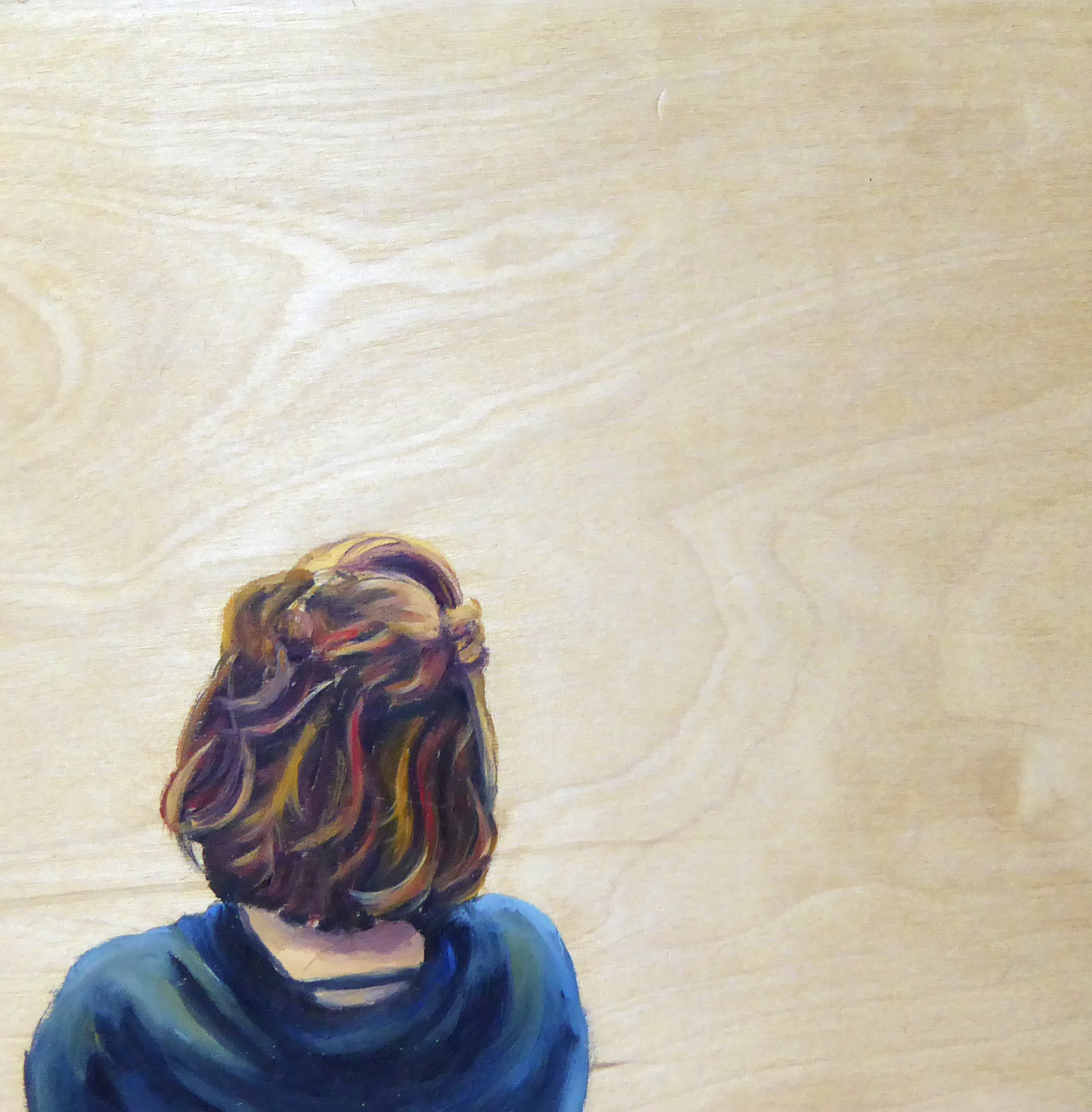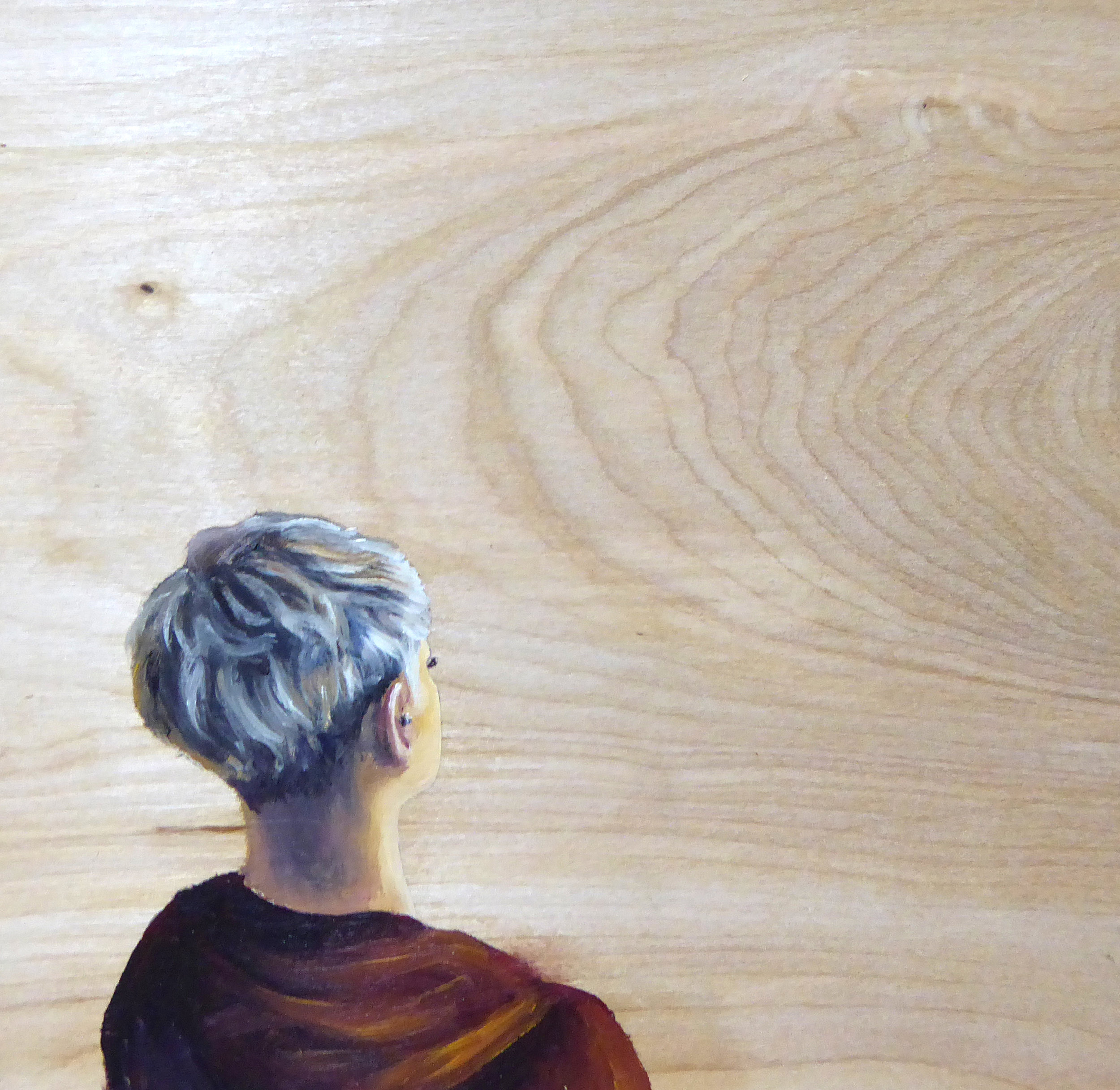Backwards Portraits
Backwards Portraits
In my reverse portrait series, I am bringing attention to the assessment of women based on their appearance from behind. We tend to reflect not only our cultural upbringing with what we wear, but also our religious preferences, and the perceptions we wish people to have about us.
My first exposure to the reverse facing figure was in Giotto’s frescos, where it allowed the congregation to become part of the progression of the crucifixion of Christ. I found it fascinating that a viewer could then see themselves in a historical lineage of scenes, and bridge the space between the figure and the onlooker
My thematic inspiration comes first from my experiences with sexual harassment, and the ever-unanswered question of what it is about the back of a woman’s body that garners cat calling. However, I am also intrigued by the unreciprocated gaze itself, when the motivations are simply curious and voyeuristic.
The exposed wood grain presents a certain rawness of the figure, who is exposed and vulnerable in much the same way as the panel. The wood grain serves as negative space that is not stark or distracting, but natural, unpainted space. The wood is raw and untouched but not blank or unfulfilled, with a natural ebb, flow, and pattern.
Having the figures facing away creates a beautiful and mysterious ambiguity to the person. The viewer almost hopes to engage them, as if they could turn around at any moment.


















